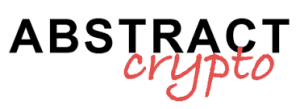The cryptocurrency sector of the European Union is on the brink of a significant change with the introduction of the new MiCA (Markets in Crypto-Assets) rules, which will become partially applicable at the end of this month. This legislation is intended to provide a clear regulatory framework for crypto-assets, including critical aspects such as KYC (Know Your Customer) and AML (Anti-Money Laundering) requirements.
The meaning of the MiCa regulation in the European Union (EU)
The MiCA is formulated with the intent to standardize the regulation of crypto-assets across the EU, eliminating legislative disparities between various Member States and ensuring a coordinated approach to market supervision. The regulations cover a wide range of aspects, from licensing to operational management, with the aim of increasing transparency, promoting market integrity, and protecting consumers.
The framework imposes rigorous controls on the governance and operations of stablecoin, crypto-assets that seek to maintain a stable value by tying themselves to reserves of traditional currencies or other assets. These rules include requirements for reserve coverage, the frequency of audits, and the disclosure of information, with the aim of mitigating financial risks and ensuring greater stability.
The prescriptive approach of MiCA on stablecoins is raising concerns among industry operators. Cryptocurrency analyst Jean-Marc Bonnefous commented: “The MiCA regulation could pose significant challenges for stablecoins operating in the EU, negatively affecting their appeal as a stable alternative to more volatile cryptocurrencies.” The concerns stem from the potential increase in operational costs and the administrative complexity required to comply with the new rules.
Furthermore, the restrictions on who can issue stablecoin and the strict requirements for reserves could limit the number of operators able to compete effectively in the market. This could reduce diversity and innovation in the sector, consolidating the market into the hands of a few large players who can afford to navigate the complex regulatory environment.
Market reactions and adaptation strategies
Many industry operators are already adapting their strategies in response to the new regulatory framework. Some are exploring partnerships with traditional financial institutions, while others are investing in advanced compliance technologies to efficiently manage regulatory demands. “It is essential for us to remain agile and innovative, while complying with the new requirements,” stated Alice Martin, CEO of a popular cryptocurrency exchange platform.
The response of consumers to the new rules is yet to be seen, but it is likely that the increased security and transparency will attract new investors to the cryptocurrency market, partially offsetting the anticipated negative impacts. Additionally, a clear regulatory environment could increase the confidence of institutions, potentially leading to a greater flow of capital into the sector.
Conclusions
In conclusion, the introduction of the MiCA regulatory framework represents a decisive step towards greater regulation and stability in the cryptocurrency market in Europe. Despite the initial challenges and concerns expressed by some industry operators, the rules could attract a greater number of institutional investors, increasing the legitimacy and security of the entire ecosystem.
The key to long-term success will be the adaptability of market participants and their ability to navigate effectively in the new regulatory environment, ensuring that innovation continues to thrive under a clear and coherent regulatory regime


